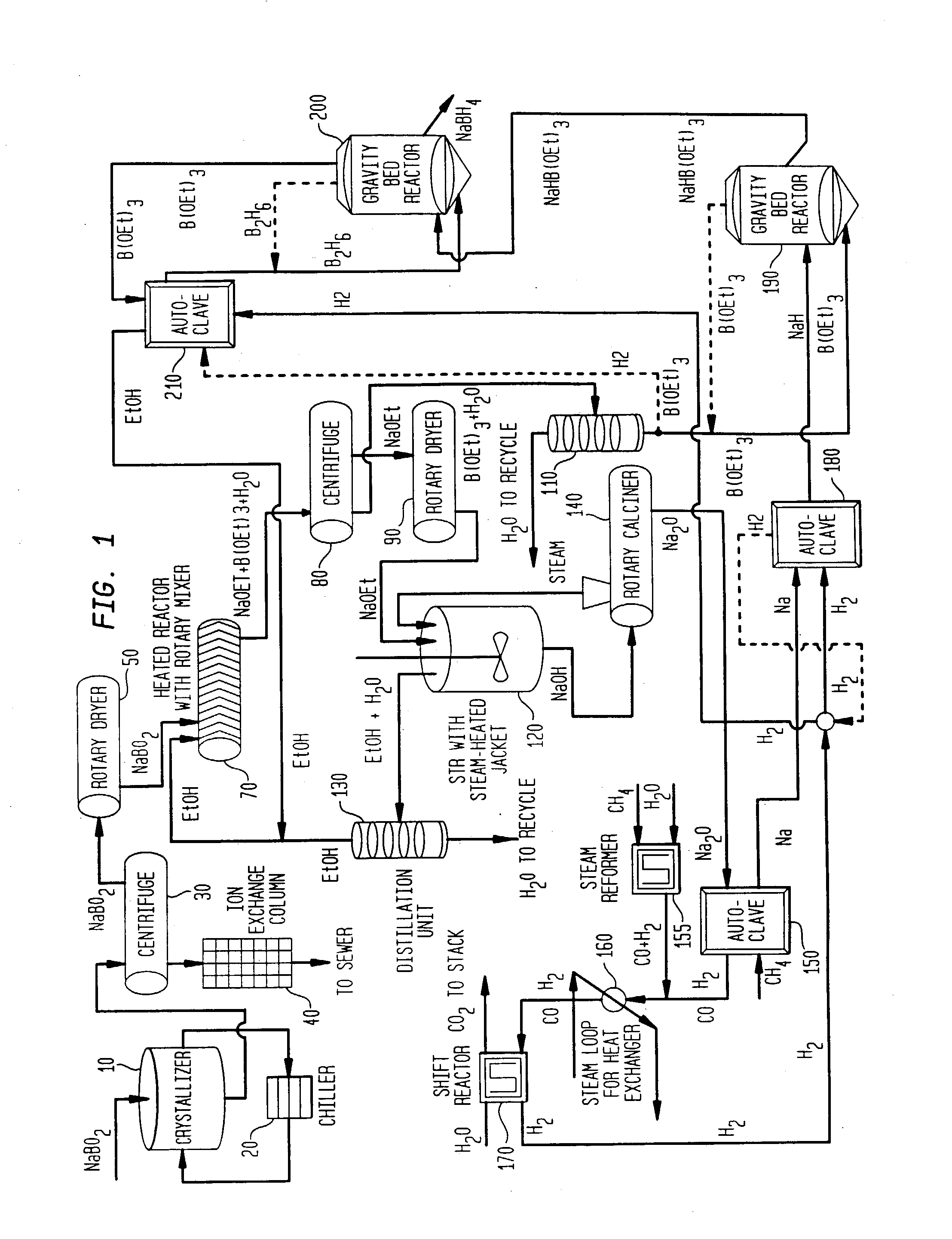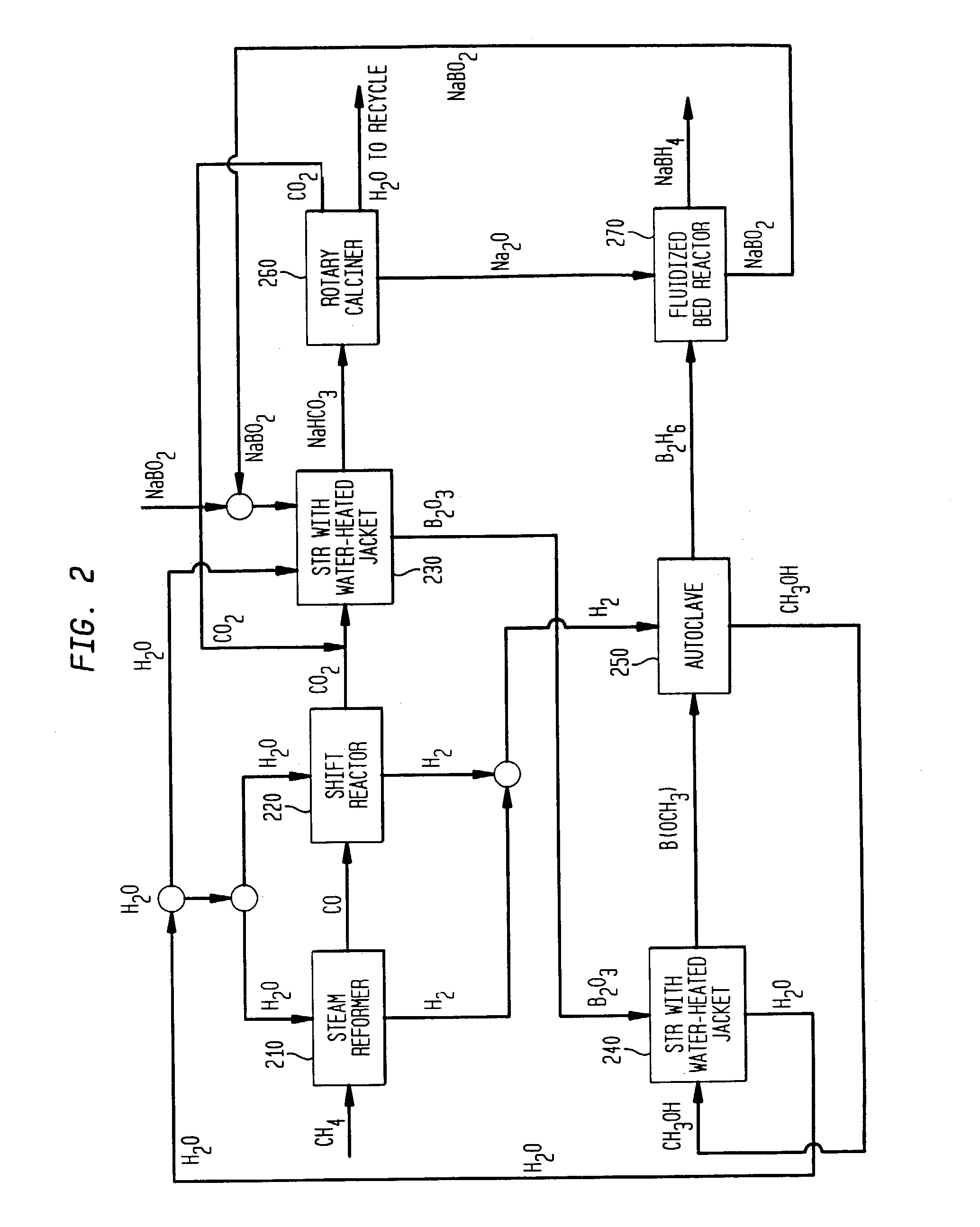Processes for synthesizing borohydride compounds
a technology of borohydride and compound, which is applied in the direction of monoborane/diborane hydrides, dyeing process, mechanical equipment, etc., can solve the problems of schlesinger process, high sodium content, and high energy cost of these processes
- Summary
- Abstract
- Description
- Claims
- Application Information
AI Technical Summary
Problems solved by technology
Method used
Image
Examples
Embodiment Construction
[0016] The present invention includes processes for producing borohydride compounds from sodium borate or sodium borate ores, such as borax (referred to herein as "borate compounds"). Each step of these processes can be conducted in a batchwise or continuous manner, as is well-known to the skilled artisan. The term "about," as used herein, means +10% of the stated value.
[0017] The overall cost of producing borohydride compounds is net hydrogenation of a borate compound, such as, sodium borate, borax ore, or higher borates of the formula Na.sub.2O.xB.sub.2O.sub.3, where x is 2 to 5, such as, tetraborate and pentaborate, to give sodium borohydride and water as shown in equation (3).
NaBO.sub.2+H.sub.2.fwdarw.NaBH.sub.4+H.sub.2O (3)
[0018] The hydrogen can be obtained from any suitable source, as is well known to one skilled in the art. Where the hydrogen gas is liberated by the steam reformation of methane, for example, the net reaction can be represented as illustrated in equation (4):...
PUM
| Property | Measurement | Unit |
|---|---|---|
| temperature | aaaaa | aaaaa |
| temperature | aaaaa | aaaaa |
| temperature | aaaaa | aaaaa |
Abstract
Description
Claims
Application Information
 Login to View More
Login to View More - R&D
- Intellectual Property
- Life Sciences
- Materials
- Tech Scout
- Unparalleled Data Quality
- Higher Quality Content
- 60% Fewer Hallucinations
Browse by: Latest US Patents, China's latest patents, Technical Efficacy Thesaurus, Application Domain, Technology Topic, Popular Technical Reports.
© 2025 PatSnap. All rights reserved.Legal|Privacy policy|Modern Slavery Act Transparency Statement|Sitemap|About US| Contact US: help@patsnap.com


